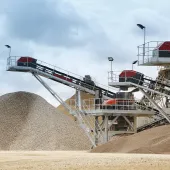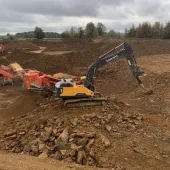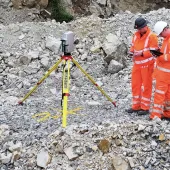MPA calls on Defra to ‘think again’

Fears new biodiversity net-gain metric will deliver worse outcomes for nature from quarries
THE Mineral Products Association (MPA) believes that new requirements for biodiversity net gain, and application of the ‘Metric’, could lead to worse outcomes for nature than those delivered through the current minerals planning system. It argues that the minerals industry is uniquely placed to deliver positive outcomes for nature and has been doing so for more than 50 years.
Today (7 July) sees publication of the latest Defra ‘Biodiversity Metric 3.0’, the formula to be used in most planning applications to demonstrate delivery of a ‘biodiversity net gain’ of at least 10%.
The MPA has long called for greater recognition that mineral extraction delivers net gain as a matter of course, and a Metric is not needed. It says if the sector is to have a Metric, this needs to recognize the unique characteristics and opportunities presented by minerals extraction and the restoration of quarries. However, the MPA says these calls have not been heeded and a one-size-fits-all approach is being introduced that might encourage less, not more, habitat to be delivered.
The net-gain requirement is one of the measures in the Environment Bill that is currently progressing through Parliament. Once enacted, biodiversity net gain will become a legal requirement for new development. This has been introduced to address the serious damage to wildlife resulting from other types of development, particularly housing.
The MPA stresses that mineral extraction is different. It is a temporary activity which occurs over many years, and once the mineral has been extracted, sites are progressively restored, creating new habitats. Creation of some habitats – eg lakes, reed beds, rock faces, lowland heathland – is demonstrably easier to achieve on minerals sites. However, the new Metric could encourage delivery of habitats deemed easier to create in a shorter-term, rather than what is best for wildlife.
To date, MPA members have created over 80 sq km of UK priority habitats, with a further 110 sq km committed to in restoration plans – footprints that are equivalent to the cities of Derby and Liverpool respectively. The MPA’s National Nature Park includes 80 such sites.
Nigel Jackson, chief executive of the MPA, said: ‘Net gain is not a new concept for the minerals industry. It has a long and proven track record over 50 years of delivering high-quality biodiversity gain on its land, especially through restoration of quarries. This has been achieved without either a legal requirement or a Metric, but rather by minerals operators working with planning authorities, communities and conservation bodies to agree and deliver restoration schemes that self-evidently deliver for nature.
‘Rather than recognizing the significant contribution the mineral products sector has made delivering nature recovery, this industry is being saddled with a Metric designed to offset the impacts of new housing development. The one-size-fits-all approach that is being proposed will create a delivery framework that may encourage less, not more, habitat to be delivered. This represents a perverse environmental outcome at a time when government is continually stressing the importance of nature recovery. We would ask that Defra and Natural England think again.
‘We hope that mineral planning authorities will be pragmatic and focus on outcomes rather than numbers and processes designed for and more suited to housing.’









